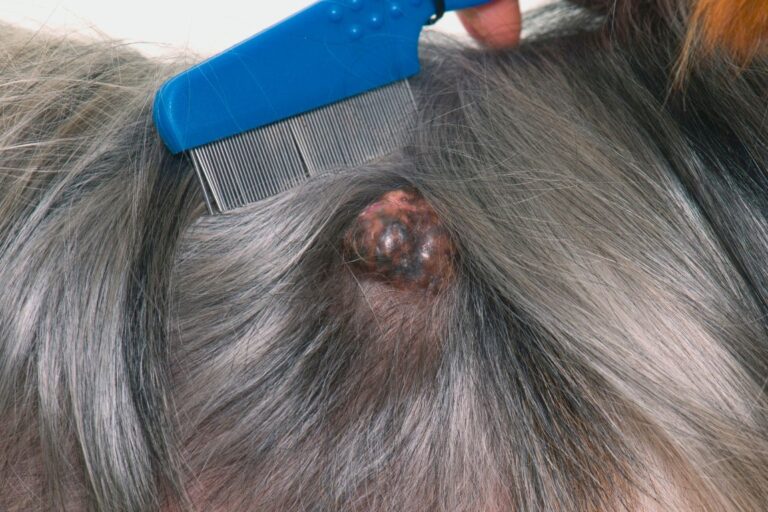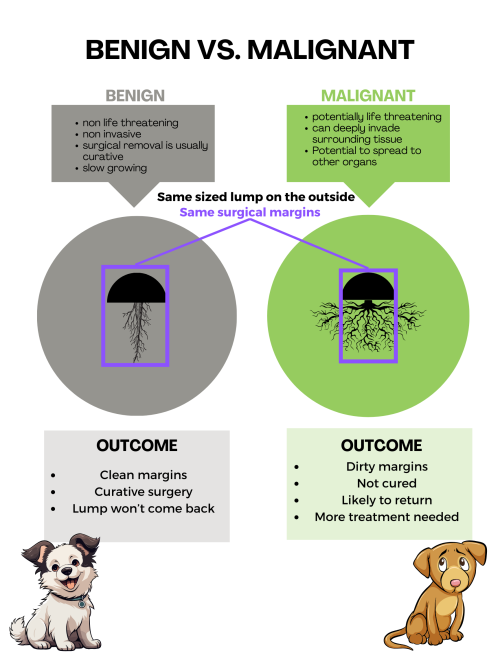#102 – 280 Sheppard Ave East North York, ON | 647-260-8387 | yonge.sheppard.vets@gmail.com
Yonge Sheppard Animal Hospital
#102 – 280 Sheppard Ave East North York, ON
Lumps and Bumps: A Pet Owner’s Guide to Skin Lumps
So, your furry friend has a mystery bump? 🐾
Hey there, pet parent! We get it – finding a weird lump or bump on your beloved furball can be a little unsettling. But don’t panic! In this handy guide, we’ll explore the ins and outs of those enigmatic skin growths and what to do next.

Topics Covered:
The Big "C" Question: Is It Cancer?
The first thing you want to know is if that lump is the “Big C” – cancer. Here are some questions to help you figure it out. It’s also a good idea to look over these questions and have some answers ready for when you bring your pet to the vet to get their lump examined:
a) How long has it been there?
b) Is it getting bigger?
c) Does it change from day to day? (Is it big one day and small the next?)
d) Does it cause any pain or discomfort? (Do you see your pet scratching/licking at the lump? Are you able to handle the lump, or does your pet have a reaction when you try to touch it?)
Not all Lumps are Created Equal: Decoding Benign vs. Malignant Lumps 
So, what exactly separates a benign lump from a malignant one? Let’s break it down:
Benign Lumps:
- These lumps are either non-cancerous or very gentle cancers that don’t pose a significant threat to your pet’s health.
- They often have well-defined borders and appear similar to normal tissues.
- Benign lumps generally grow slowly and tend to remain in one place.
- Surgical removal with clear margins is often curative for benign lumps.
Malignant Lumps:
- Malignant lumps are cancerous, and can potentially spread to other parts of the body.
- They may lack well-defined borders and often appear different from surrounding tissues.
- These lumps tend to grow faster and can infiltrate nearby structures.
- Treatment for malignant lumps may involve additional steps, such as chemotherapy, radiation, or more extensive surgery.

Understanding the nature of a lump is crucial because it guides the choice of treatment and helps you and your veterinarian make the best decisions for your furry friend.
So how do we know which lumps are good and which are good and which lumps are bad?
While some lumps have a characteristic look, the truth is we can’t tell if it’s cancer without examining the cells under a microscope.
"The Scoop" on Sampling Lumps 🔎
There are three ways to sample a lump:
1. Fine Needle Aspirate (FNA)
To perform this diagnostic, we take a small needle and poke it into the lump while simultaneously aspirating to pull up a small sample of cells which are (hopefully) representative of the mass.
Pros: Simple, no sedation, budget-friendly.
Cons: Not always conclusive.
Why aren't FNAs conclusive all the time?
1. Exfoliation Variation
Not all cells exfoliate (shed) in the same way. Picture sticking a needle into an orange and drawing back – you might get a tiny bit of orange juice. Now, envision doing the same to a sponge – you’d likely come up empty. Masses (lumps) are similar. Some are inherently more fibrous and don’t readily release cells.
2. Accuracy Challenges
Sometimes, the lump is nestled amidst other structures like fat, infection, or inflammation. This can make it difficult to collect cells that accurately represent the lump itself, rather than the surrounding tissue. Think of trying to poke a boba pearl submerged in the center of a large bowl of gelatin – the target is there, but it’s not easy to isolate around the surrounding gelatin.
In such cases, FNA may provide inconclusive results, necessitating other diagnostic methods for a more precise assessment.
2. Excisional Biopsy
Here, we surgically remove the whole lump and send it to the lab
Pros: If it’s benign and we get clean margins, it could be curative.
Cons: May need a second surgery if margins aren’t clean, costlier, and might require anesthesia.
3. Incisional Biopsy
Here, we take a only a small piece of the mass and send it to the lab.
Pros: High likelihood of getting an answer about what the lump is
Cons: More expensive, might need sedation, and additional treatments.
The "Margin" Mystery 🌱
Not all lumps are equal; some are exactly as they appear to be, others are sneaky and have extensive networks of tissue that extend beyond the margins of the primary lump. When it comes to exercising cancer, you need to get every cell to prevent it from coming back.
Think of them like plants. If the roots are simple and narrow, then removing the main mass works. But if it has extensive “roots,” we need to know what we’re dealing with. Margins are like how much of the “roots” we need to remove.
Treatment Options 🏥
1. Monitor
If the lump is small, stable, and your furry friend seems unperturbed by it, it’s perfectly fine to keep an eye on it. However, be vigilant! If you notice any of the following changes, it’s time to consult your vet:
- Lump is getting bigger
- Lump is changing in any way (such as a change in the consistency, size, color of the lump)
- Signs of inflammation or infection (such as red, irritated/angry skin, pus discharge)
- Pain
Keep in mind, any lump that has been around for more than 1-2 months should be sampled to rule out potential concerns.
2. Fine Needle Aspirate
When in doubt, let’s “poke” this mystery bump with a tiny needle and analyze the cells under a microscope. This method is straightforward, usually doesn’t require sedation, and is relatively budget-friendly. However, it may not always provide conclusive results.
3. Biopsy
Sometimes, we need the whole scoop. In this case, a biopsy involves surgically removing the entire lump for a closer look under the microscope. The benefit is that if it’s benign and clean margins are achieved, it can be curative. But if margins aren’t clean, a second surgery may be necessary. This option can be pricier and may require sedation or even anesthesia, depending on the size and location of the lump.
Remember, your pet’s health and happiness are our top priorities! 🐕🐾🐱
Remember, finding a lump on your pet can be a little scary, but don’t jump to conclusions. It’s like a mystery waiting to be solved. If you’re concerned, consult your friendly neighborhood veterinarian. They’ll help you figure out the best way to tackle it and keep your furry friend in tip-top shape! 🐶🐾🐱


